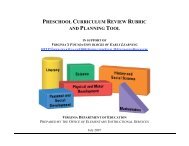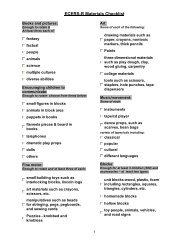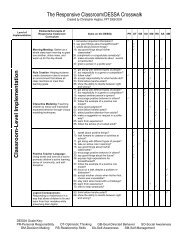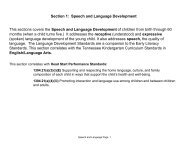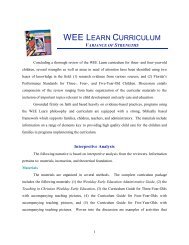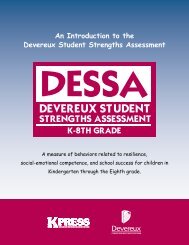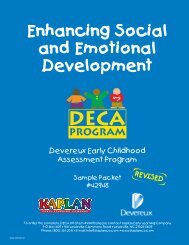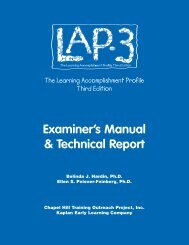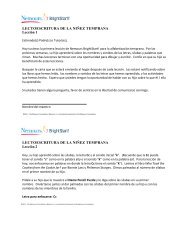Examiner's Manual & Technical Report - Kaplanco.com
Examiner's Manual & Technical Report - Kaplanco.com
Examiner's Manual & Technical Report - Kaplanco.com
- No tags were found...
Create successful ePaper yourself
Turn your PDF publications into a flip-book with our unique Google optimized e-Paper software.
Recording Observations and Re<strong>com</strong>mendationsThe “Observations and Re<strong>com</strong>mendations” pages of the Scoring Booklet are optional. However,these pages may assist the examiner, evaluator, or teacher in recording pertinent informationfrom the assessment that would be useful in planning instructional programs or interventions forthe child. This type of information often helps parents understand their child’s specific strengthsand emerging skills. These <strong>com</strong>ments should focus on information related to understanding thespecific developmental skills a child is ready to learn in relationship to his or her chronologicalage. “Strengths” describe specific skills that the child has mastered (e.g., items on which thechild scored a plus). “Needs” should describe emerging skills or skills that the child is ready tolearn, but cannot yet perform successfully (e.g., items on which the child scored a minus).“Re<strong>com</strong>mendations” is a general column that could be used to record any other information orre<strong>com</strong>mendations based on the assessment results. The page for “Observations” should be usedto record or summarize any observations that might affect interpretation of assessment results.For example, if a child was distracted, very inattentive, and/or refused to attempt several tasks,such information should be noted under “Observations” to alert others reviewing the informationabout other factors that might have affected the child’s performance.Developing Individual Goals and ObjectivesLAP-D assessment results can facilitate the development of goals and objectives forindividualized instruction and/or the development of an Individualized Education Plan (IEP) oran Individualized Family Service Plan (IFSP). The LAP-D subscales represent the primarydomains of early childhood development and thus are appropriate for identifying long-termgoals in specific areas (e.g., Fine Motor: Manipulation, Language: Comprehension, etc.).Individual assessment items provide guidance in developing of short-term objectives. Thefollowing suggestions may assist in the utilization of LAP-D assessment results forindividualized instruction.Select Long-term Goals. A review of the Scoring Summary & Profile will help the examineror teacher identify broad developmental areas (subscales) that are a need or a strength (e.g.,long-term goals). Generally, areas of need indicated by standard scores well above or wellbelow the mean should be the foundation for developing long-term goals.Identify Short-term Objectives. For each subscale selected as a long term goal, theexaminer or teacher should review the child’s individual item responses within each subscaleto determine short-term objectives. Often the items for which a child receives a minus (-)indicate an emerging skill. The two or three items following the ceiling may also beappropriate for developing short-term objectives.Evaluation criteria for short-term objectives. The procedure and scoring criteria within theAssessment <strong>Manual</strong> give guidance for evaluating short-term objectives. Pre- and postassessmentprocedures may be useful in determining progress toward achieving short-termobjectives.37




